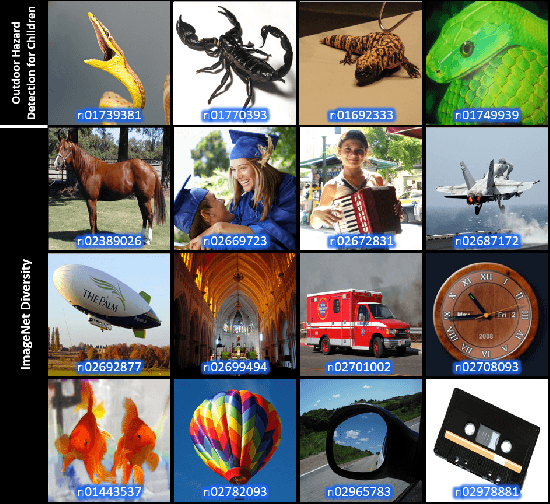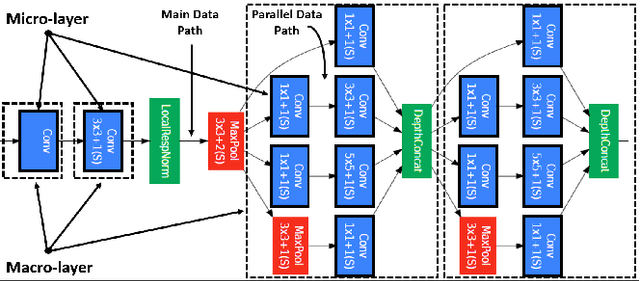Daniel Fong
Distill-Net: Application-Specific Distillation of Deep Convolutional Neural Networks for Resource-Constrained IoT Platforms
Dec 16, 2018



Abstract:Many Internet-of-Things (IoT) applications demand fast and accurate understanding of a few key events in their surrounding environment. Deep Convolutional Neural Networks (CNNs) have emerged as an effective approach to understand speech, images, and similar high dimensional data types. Algorithmic performance of modern CNNs, however, fundamentally relies on learning class-agnostic hierarchical features that only exist in comprehensive training datasets with many classes. As a result, fast inference using CNNs trained on such datasets is prohibitive for most resource-constrained IoT platforms. To bridge this gap, we present a principled and practical methodology for distilling a complex modern CNN that is trained to effectively recognize many different classes of input data into an application-dependent essential core that not only recognizes the few classes of interest to the application accurately, but also runs efficiently on platforms with limited resources. Experimental results confirm that our approach strikes a favorable balance between classification accuracy (application constraint), inference efficiency (platform constraint), and productive development of new applications (business constraint).
Resource-Scalable CNN Synthesis for IoT Applications
Dec 16, 2018



Abstract:State-of-the-art image recognition systems use sophisticated Convolutional Neural Networks (CNNs) that are designed and trained to identify numerous object classes. Such networks are fairly resource intensive to compute, prohibiting their deployment on resource-constrained embedded platforms. On one hand, the ability to classify an exhaustive list of categories is excessive for the demands of most IoT applications. On the other hand, designing a new custom-designed CNN for each new IoT application is impractical, due to the inherent difficulty in developing competitive models and time-to-market pressure. To address this problem, we investigate the question of: "Can one utilize an existing optimized CNN model to automatically build a competitive CNN for an IoT application whose objects of interest are a fraction of categories that the original CNN was designed to classify, such that the resource requirement is proportionally scaled down?" We use the term resource scalability to refer to this concept, and develop a methodology for automated synthesis of resource scalable CNNs from an existing optimized baseline CNN. The synthesized CNN has sufficient learning capacity for handling the given IoT application requirements, and yields competitive accuracy. The proposed approach is fast, and unlike the presently common practice of CNN design, does not require iterative rounds of training trial and error.
Fast and Energy-Efficient CNN Inference on IoT Devices
Nov 22, 2016



Abstract:Convolutional Neural Networks (CNNs) exhibit remarkable performance in various machine learning tasks. As sensor-equipped internet of things (IoT) devices permeate into every aspect of modern life, it is increasingly important to run CNN inference, a computationally intensive application, on resource constrained devices. We present a technique for fast and energy-efficient CNN inference on mobile SoC platforms, which are projected to be a major player in the IoT space. We propose techniques for efficient parallelization of CNN inference targeting mobile GPUs, and explore the underlying tradeoffs. Experiments with running Squeezenet on three different mobile devices confirm the effectiveness of our approach. For further study, please refer to the project repository available on our GitHub page: https://github.com/mtmd/Mobile_ConvNet
 Add to Chrome
Add to Chrome Add to Firefox
Add to Firefox Add to Edge
Add to Edge